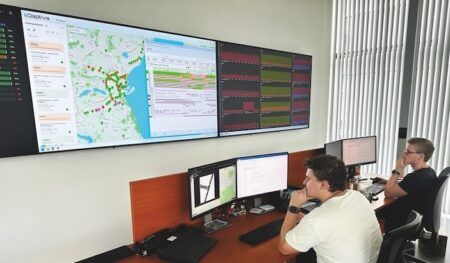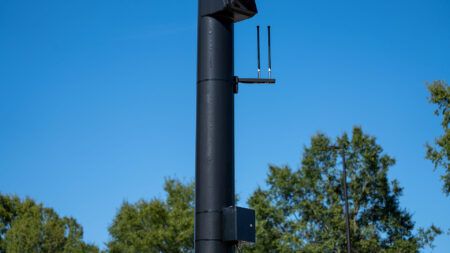Samsung SDS, the digital arm of the Korean electronics giant, and UK-based developer of smart streetlighting and Internet of Things (IoT) data collection systems Telensa have announced they are working together on smart city projects.
The two companies are collaborating on smart streetlighting, in which Telensa is the global leader with more than 1.7 million lights deployed, and the Urban Data Project, a cloud platform that creates a trust infrastructure for urban data, that enables cities to collect, protect and use their data for the benefit of all citizens.
 The first collaboration will be in city projects in Korea, with wider deployments following across the Asia-Pacific region and in the USA. The initial area of collaboration is smart streetlighting, where Telensa’s PLANet streetlight control application will be used in combination with the Samsung SDS Brightics IoT platform, enabling cities to enjoy energy savings and access a vast ecosystem of IoT sensor applications.
The first collaboration will be in city projects in Korea, with wider deployments following across the Asia-Pacific region and in the USA. The initial area of collaboration is smart streetlighting, where Telensa’s PLANet streetlight control application will be used in combination with the Samsung SDS Brightics IoT platform, enabling cities to enjoy energy savings and access a vast ecosystem of IoT sensor applications.
Samsung SDS will provide its powerful Brightics IoT platform that has been developed for retrieving and analyzing big data, powered by artificial intelligence (AI). Telensa will also make use of Samsung’s deep expertise in other areas, such as 5G cellular technology and blockchain, which require streetlight access for ubiquitous deployment.

Samsung SDS will also be working with Telensa on the Urban Data Project (UDP) that is currently being rolled out in the company’s home city of Cambridge, and is building a collaborative system that creates a trust infrastructure for urban data, enabling cities to collect, protect and use their data for the benefit of all citizens. This collaboration will involve integrating Brightics IoT with Telensa’s City Data Guardian, part of its wider Urban Data Project.
Urban data is the mosaic of street-by-street, minute-by-minute information that makes up a city’s digital twin. It includes mapping how people use the city, the mix of traffic on the roads, the hyper-local air quality and noise levels. This data is extremely valuable for designing better city infrastructure, delivering more efficient city services, and making everything more transparent to empower citizens. To date the use of urban data has been limited by two barriers: how to apply best-practice privacy policies to data and provide transparency to citizens on how that information is protected and used; and the cost of single-purpose sensors and the related cost of moving raw video data to the cloud.
 The UDP aims to solve these problems using:
The UDP aims to solve these problems using:
The City Data Guardian trust platform to apply transparent privacy policies, comply with data regulations, and make data available to improve services and drive future city revenues; and Multi-Sensor Pods installed on streetlight poles, combining video and radar working together to provide a more complete picture, with AI and machine learning used to extract detailed real-time insights from the raw data.
“We are delighted to be working with Telensa to enable cities to harness and protect their urban data assets on behalf of their citizens,” noted Sean Im, senior vice president of the solution business division at Samsung SDS.
“By combining the capabilities of both companies, we plan to further explore new possibilities to adopt the latest information technologies including AI and blockchain.”





